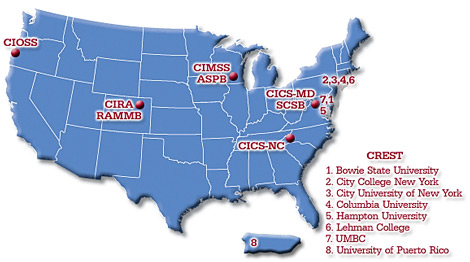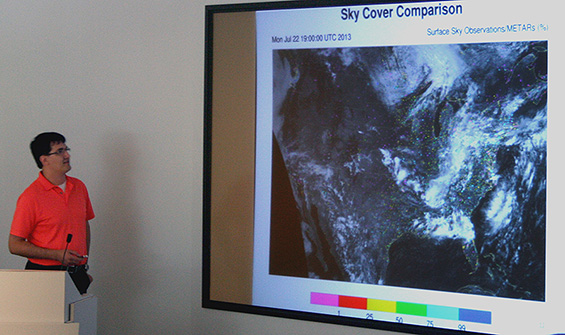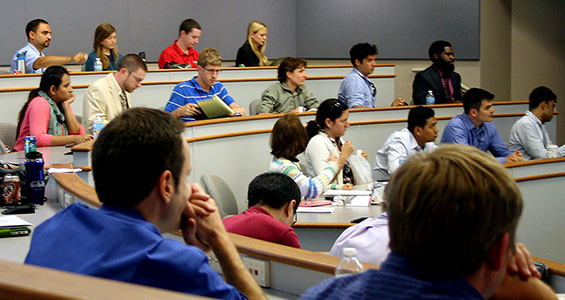Next-Generation Meteorologists Gather in Madison
On 23-24 July 2013, young researchers from around the country will meet at the Pyle Center on the UW-Madison campus to present their work in remote sensing of the environment, attend panel discussions on the best ways to advance their careers, and perhaps most importantly, meet one another and enable future collaborations.
The Cooperative Research Program (CoRP) 9th Annual Science Symposium focuses on early-career scientists. Sponsored by the National Oceanic and Atmospheric Administration (NOAA), it presents a valuable opportunity for the next generation of remote sensing researchers to share highlights of their research while gaining experience presenting their work in a conference setting.
This year the conference theme is “Toward a Weather-Ready Nation and Resilient Coastal Communities.” Dr. Christian Kummerow, from the Colorado State University Department of Atmospheric Science, will kick off the meeting with his keynote address: “From Radiative Transfer to NASA Missions and NOAA Cooperative Institutes.”
CoRP coordinates a nation-wide group of Cooperative Institutes that were established as government-university partnerships with a shared mission to develop methods of studying the Earth from a satellite platform. CoRP includes the UW-Madison Cooperative Institute for Meteorological Satellite Studies (CIMSS) and the Cooperative Remote Sensing Science and Technology Center (CREST); it was out of a desire to help CREST students succeed in their future careers that the Symposium was created.

CoRP Institutes and Centers, including the several institutions that make up CREST. Image credit: NOAA Center for Satellite Applications and Research.
Steve Ackerman, the Director of CIMSS, says: “The original idea was to give the students at CREST a chance to visit other institutes. Now the Symposium gets students from the various Cooperative Institutes in one place where they can meet and interact. This is a good way for them to learn about the work their peers are doing.”
One of the attendees is CIMSS doctoral student Jordan Gerth. He will be presenting “Sky Cover – Shining a Light on a Gloomy Problem,” an innovative analytic tool that combines ground observations of cloud cover, which tend to scan from horizon to horizon, and satellite observations, which tend to focus on a specific area. He hopes that his work will reconcile some of the differences between ground and satellite observations and arrive at more unified, and more uniformly applied, definitions of cloud cover.
“This is a new experience for me,” Gerth says, “I get to meet students from other cooperative institutes and see what they are working on. Since most of us attendees are students, our work isn’t all that well known yet. This is a great way to get some early exposure.”
Awards will be given for best oral presentations as well as best poster display. The event also includes panel discussions on career preparation and advancement, a tour of the AOSS Building, and even an opportunity to attend a classical music Concert on the Square.
At this early moment in their careers, these young researchers are learning to effectively communicate their own ideas to others in a realistic venue as they become part of the larger community of scientists in their area of growing expertise. The CoRP not only highlights their research but also widens horizons, creating connections and the possibility for future collaborations.


